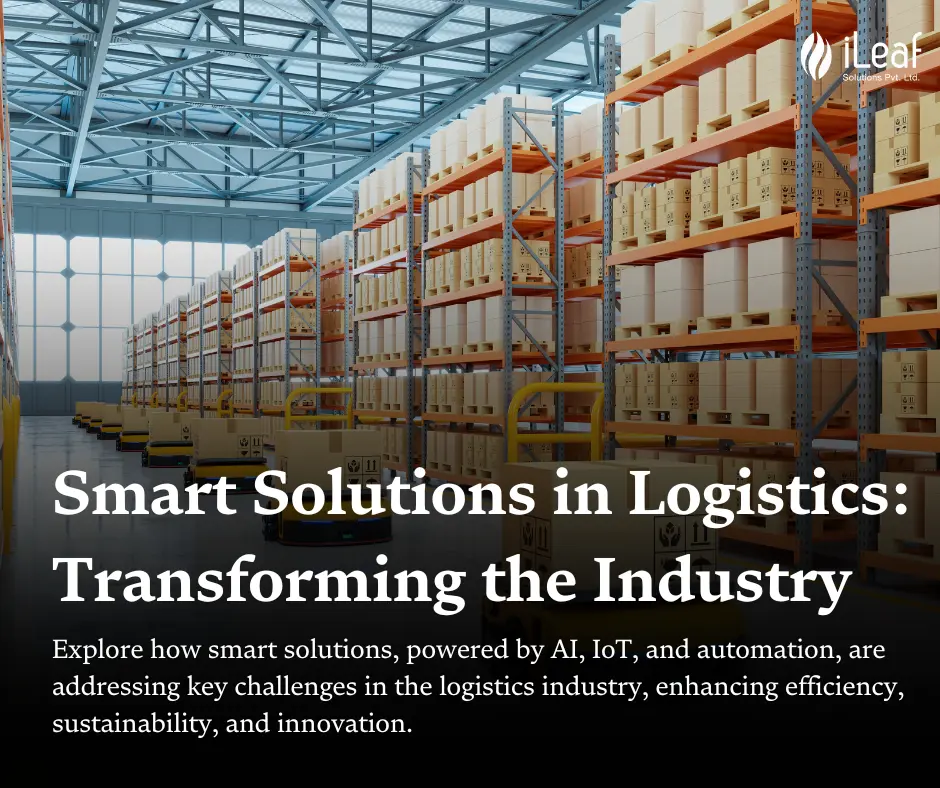Smart Solutions in Logistics: Transforming the Industry

Table of Contents
- Introduction
- Understanding Key Challenges in the Logistics Industry
- The Role of Smart Solutions in Addressing Challenges
- Artificial Intelligence (AI) and Predictive Analytics
- Internet of Things (IoT) for Real-Time Inventory Tracking
- Robotics and Automation with Autonomous Mobile Robots (AMRs)
- Practical Applications from Industry Leaders: FedEx Case Study
- Strategies for Implementing Smart Solutions Effectively
- Conclusion: Embracing a Smarter Future in Logistics Operation
Introduction
The logistics industry, the backbone of global commerce, has long faced challenges such as inefficient operations, high costs, and supply chain disruptions. However, the advent of technology has ushered in a new era of innovation, promising to revolutionize the way we move goods and services. Smart solutions, powered by artificial intelligence (AI), the Internet of Things (IoT), and robotics, are at the forefront of this transformation.
Understanding Key Challenges in the Logistics Industry
Before diving into the solutions, it's essential to recognize the primary challenges hindering the industry's efficiency. The lack of real-time data on inventory, transportation, and delivery status can lead to delays and inefficiencies. Storage, transportation, and handling expenses can significantly impact profitability. Additionally, the environmental impact of logistics operations, including emissions and waste, is a growing concern.
The Role of Smart Solutions in Addressing Challenges
Smart solutions offer a comprehensive approach to addressing these challenges. IoT-enabled sensors and tracking devices provide real-time data on asset location, condition, and movement, improving visibility and transparency. AI algorithms can analyze historical data to predict potential disruptions and optimize routes, enhancing efficiency and reducing costs. Automation and robotics streamline processes, reducing manual labor and errors, while also contributing to sustainability by optimizing routes, reducing fuel consumption, and minimizing waste.
Artificial Intelligence (AI) and Predictive Analytics
Artificial intelligence (AI) is a game-changer in logistics. Predictive analytics, a subset of AI, leverages historical data to forecast future trends. This enables accurate demand forecasting, which helps optimize inventory levels and reduce stockouts. AI algorithms can also identify the most efficient routes, saving time and fuel. Moreover, by anticipating potential disruptions, businesses can develop contingency plans, effectively managing risks.
Internet of Things (IoT) for Real-Time Inventory Tracking
The Internet of Things (IoT) is another crucial technology in logistics. IoT devices, such as RFID tags and sensors, provide real-time visibility into inventory levels and location. This reduces stockouts by ensuring accurate inventory data, improves efficiency by enabling faster order fulfillment and reducing search time, and enhances security by preventing theft and unauthorized access to inventory.
Robotics and Automation with Autonomous Mobile Robots (AMRs)
Robotics and automation are transforming warehouse operations. Autonomous mobile robots (AMRs) are particularly valuable for material handling, inventory management, and increased productivity. By automating repetitive tasks, AMRs free up human workers for more strategic roles.
Practical Applications from Industry Leaders: FedEx Case Study
FedEx, a global leader in logistics and transportation, has been at the forefront of technological innovation within the industry. Their commitment to efficiency, sustainability, and customer satisfaction has driven them to adopt a wide range of smart solutions.
One of FedEx's most notable initiatives is the widespread implementation of IoT-enabled tracking. By embedding tracking devices into packages, FedEx can provide customers with real-time updates on their shipments' location and status. This not only enhances customer experience but also enables more efficient operations by optimizing delivery routes and reducing the need for manual tracking.
Another key area where FedEx has excelled is AI-powered routing. Using advanced algorithms, FedEx's systems can analyze various factors such as traffic conditions, weather forecasts, and package priorities to determine the most efficient routes.
In their warehouses, FedEx has embraced robotics to automate many of the repetitive tasks involved in package handling and sorting. These robots can efficiently move packages between different areas of the warehouse, reducing the need for manual labor and increasing productivity.
FedEx's investment in these technologies has yielded significant benefits. Customers now have greater visibility into their shipments, leading to increased satisfaction. The company has also realized substantial cost savings through improved efficiency and reduced fuel consumption. Moreover, FedEx's commitment to sustainability is evident in its efforts to reduce its environmental impact through technology-driven solutions.
By serving as a pioneer in the adoption of smart solutions, FedEx has demonstrated the transformative potential of technology in the logistics industry. Their success story inspires other companies to explore innovative ways to improve their operations and deliver exceptional value to their customers.
Strategies for Implementing Smart Solutions Effectively
Implementing smart solutions requires careful planning and execution. A data-driven approach is essential to identify areas for improvement. Pilot projects can be used to test new technologies on a smaller scale before widespread adoption. Collaboration with technology providers and industry experts can leverage their expertise. Additionally, employee training is crucial to ensure employees have the skills to use and maintain new technologies.
Conclusion: Embracing a Smarter Future in Logistics Operations
Smart solutions are revolutionizing the logistics industry, offering unprecedented levels of efficiency, visibility, and sustainability. By embracing these technologies, businesses can gain a competitive edge, improve customer satisfaction, and contribute to a more sustainable future. As the pace of technological advancement continues to accelerate, the opportunities for innovation in logistics are boundless.














